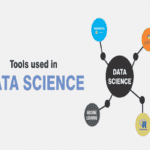In the realm of computer programming, the distinction between scripting languages and programming languages has long been a topic of debate and exploration. Both serve as essential tools for developers, yet they cater to different aspects of the software development process.
In this blog, we delve into the characteristics that define scripting languages, explore whether Python fits this classification, and provide examples to illustrate Python’s scripting capabilities.
Key Takeaways
- Interpreted Execution: Scripting languages, including Python, are typically interpreted rather than compiled, allowing for rapid development and testing.
- Automation and Glue Code: Python excels as a scripting language for tasks such as automation, data manipulation, and integrating disparate systems.
- High-Level Abstraction: Python’s easy-to-read syntax and extensive libraries make it an ideal choice for scripting complex operations.
- Dynamic Typing: Scripting languages like Python often use dynamic typing, enabling flexible data manipulation without explicit type declarations.
- Rapid Prototyping: Python’s scripting capabilities facilitate quick prototyping and iterative development.
What is a Scripting Language?
A scripting language is a type of programming language that is primarily used for automating and controlling software applications. Unlike traditional programming languages, which are compiled into machine code before execution, scripting languages are interpreted at runtime.
This interpretation allows developers to write code in a more flexible and user-friendly manner, without the need for explicit compilation.
Key Features of Scripting Languages:
- Interpreted Execution: Scripting languages are interpreted, meaning that the code is executed line by line by an interpreter at runtime. This enables rapid development and testing, making them well-suited for tasks that require quick iterations.
- Automation and Glue Code: Scripting languages are often used to automate repetitive tasks and to act as “glue” code that connects different software components or systems.
- High-Level Abstraction: Scripting languages provide a higher level of abstraction, allowing developers to express complex operations using simpler and more readable syntax.
- Dynamic Typing: Many scripting languages use dynamic typing, where variable types are determined at runtime. This flexibility allows for more fluid and versatile data manipulation.
- Rapid Prototyping: Scripting languages are excellent tools for rapid prototyping and proof of concept development. Their ease of use and quick feedback loops make experimentation efficient.
Examples of Scripting Languages:
- Python: Perhaps one of the most popular and versatile scripting languages, Python is known for its clean and readable syntax. It is widely used for tasks such as web development, data analysis, scientific computing, and automation.
- JavaScript: While often associated with web development, JavaScript’s role has expanded to include server-side scripting, making it an essential part of web applications.
- Bash: A shell scripting language commonly used in Unix-based systems for automating tasks, file manipulation, and system administration.
- Ruby: Ruby is often used for web development and scripting tasks, with the Ruby on Rails framework being a popular choice for building web applications.
- Perl: Known for its text processing capabilities, Perl is used for tasks like data extraction, manipulation, and report generation.
- PHP: Primarily used for server-side scripting in web development, PHP is embedded within HTML to create dynamic web pages.
What is a Programming Language?
A programming language is a formal system of rules and syntax used to write instructions that can be executed by a computer. It allows developers to express algorithms and processes in a way that machines can understand and execute.
Programming languages serve as a bridge between human intent and machine action, enabling the creation of software applications, games, websites, and more.
Key Features of Programming Languages:
- Syntax and Semantics: Programming languages have specific rules (syntax) for writing code and well-defined meanings (semantics) for each construct. These rules ensure that the code is structured correctly and that the intended logic is conveyed accurately.
- Abstraction: Programming languages provide varying levels of abstraction, allowing developers to work at different layers of complexity. Higher-level languages offer more abstract and human-readable constructs, simplifying the development process.
- Data Types and Variables: Programming languages support different data types (e.g., integers, strings, floats) that define the kind of data a variable can hold. Variables serve as containers for data values, facilitating dynamic storage and manipulation.
- Control Structures: Programming languages include control structures (e.g., loops, conditionals) that enable developers to control the flow of execution, make decisions, and repeat actions based on certain conditions.
- Modularity and Reusability: Languages allow developers to break down complex programs into smaller, manageable modules or functions. This modularity promotes code reuse, maintenance, and collaboration.
- Compilation vs. Interpretation: Some languages are compiled, where source code is translated into machine code before execution, optimizing performance. Others are interpreted, with code being executed directly by an interpreter at runtime, allowing for quicker development and debugging.
Examples of Programming Languages:
- C: A foundational programming language known for its efficiency and portability. It’s commonly used in system programming, embedded systems, and game development.
- Java: A versatile language used for building applications, web services, and Android apps. It emphasizes platform independence through its “write once, run anywhere” philosophy.
- Python: Known for its readability and versatility, Python is used for web development, data analysis, scientific computing, automation, and more.
- C++: An extension of C, C++ adds object-oriented programming features. It’s used in game development, system software, and high-performance applications.
- JavaScript: A dynamic language primarily used for front-end web development, enabling interactive and responsive user interfaces.
- Ruby: Often associated with the Ruby on Rails framework, Ruby is used for web development and emphasizes developer-friendly syntax.
Scripting Language vs. Programming Language:
|
Aspect |
Scripting Language |
Programming Language |
| Execution Approach |
Interpreted |
Compiled |
| Use Case |
Automation, Glue Code, Rapid Dev. |
General Software Development |
| Syntax Complexity |
Often Simplified |
Varied |
| Typing System |
Dynamic |
Static or Dynamic |
| Compilation |
No Compilation Required |
Requires Compilation |
| Examples |
Python, Bash, JavaScript |
C++, Java, C# |
Python Scripting Language Examples:
- Automating Tasks: Python scripts can automate repetitive tasks like file management, data scraping, and report generation.
- System Administration: Python is widely used for system administration scripts to manage servers, networks, and databases.
- Web Scraping: Python’s libraries like BeautifulSoup facilitate web scraping for data extraction and analysis.
- Data Processing: Python scripts are employed for data manipulation, transformation, and cleansing in data science workflows.
- Batch Processing: Python scripts orchestrate batch processes, simplifying complex operations across various files or data sets.
Concluding Thoughts
In conclusion, Python undoubtedly qualifies as a scripting language due to its interpreted execution, automation capabilities, high-level abstraction, and dynamic typing. Its versatility spans beyond traditional scripting tasks, as Python is also proficient in general software development.
As a scripting language, Python empowers developers to create efficient and concise solutions for automation, data processing, and rapid prototyping.
Frequently Asked Questions:
What is the difference between interpreted and compiled languages?
Interpreted languages are executed line by line by an interpreter at runtime, allowing for quick development and debugging. Compiled languages are translated into machine code before execution, potentially leading to higher performance.
Which programming languages are commonly used for web development?
Languages like HTML, CSS, JavaScript, Python, Ruby, and PHP are commonly used for web development, with JavaScript being vital for front-end interactivity.
How do scripting languages and programming languages differ?
Scripting languages are often used for automation, glue code, and rapid development, while programming languages have a broader range of applications, including system software, applications, and complex software systems.
What are some examples of popular scripting languages?
Examples of scripting languages include Python, JavaScript, Bash, Ruby, and Perl. They are used for tasks like automation, data processing, and web scripting.
What are some examples of popular programming languages?
Popular programming languages include C, Java, C++, Python, JavaScript, and Ruby. They are used for various applications, including system programming, application development, and web development.
Can a programming language be both a scripting language and a general-purpose language?
Yes, certain languages like Python and JavaScript can function both as scripting languages for automation and rapid development and as general-purpose languages for building complex software systems.
Are scripting languages easier to learn than programming languages?
Scripting languages often have simpler syntax and are easier to learn for beginners. However, programming languages offer more depth and complexity for building larger and more intricate applications.
Is it necessary to learn both scripting languages and programming languages?
Learning both can be beneficial, as scripting languages offer quick solutions for automation and smaller tasks, while programming languages provide the tools to create comprehensive software systems.
How do scripting languages contribute to data science and analysis?
Scripting languages like Python are extensively used in data science for data manipulation, analysis, visualization, and machine learning tasks.
Can you provide examples of real-world applications of scripting languages?
Real-world applications of scripting languages include automating software deployment, system administration, web scraping, data processing, and generating reports.
Where can I learn more about scripting languages and programming languages?
You can explore online tutorials, courses, and documentation on platforms like Codecademy, Coursera, edX, and official language-specific websites to deepen your understanding of scripting and programming languages.
Learn more with Pickl.AI
Looking to expand your knowledge in data science and programming? Explore the world of Data Science with Pickl.AI, a leading edtech platform offering comprehensive online courses. Elevate your skills and embark on a journey towards becoming a proficient data scientist. Visit Pickl.AI today to explore our courses and ignite your learning journey.











